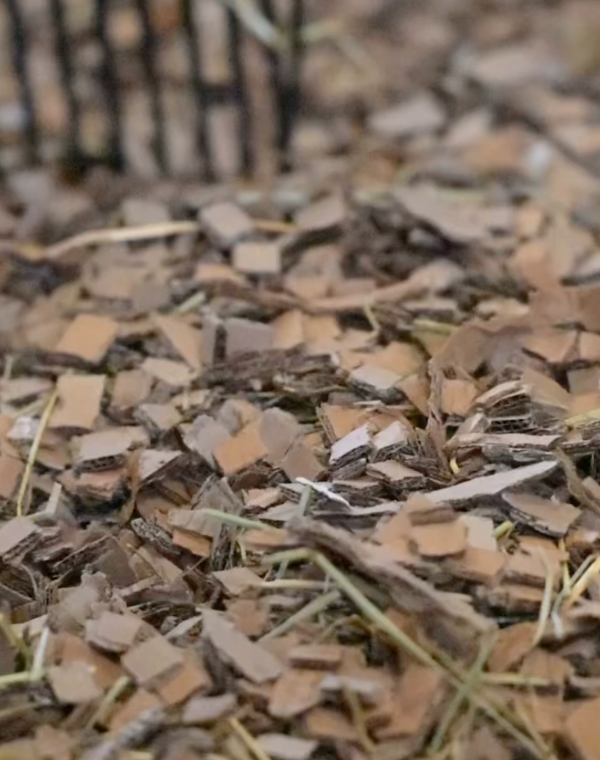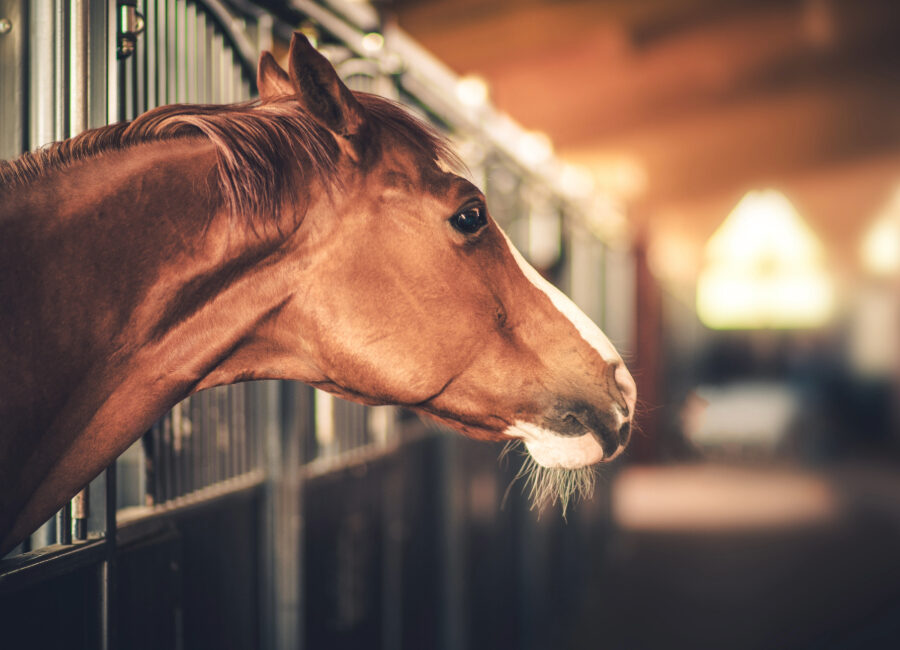With winter on the way, most of us will be spending more time inside the barn, especially our horses. It’s a great time to evaluate the stable’s most important role – supporting our horses’ health and safety.
From a veterinarian’s perspective, fresh, circulating air is the most important thing to consider when evaluating or planning for healthy barn design. Lay-outs and management strategies to reduce airborne dust and ammonia go hand-in-hand with prioritizing ventilation.
Minimizing injury risks and a suitable place for the veterinarian and other care providers to help your horse rank highly with equine care providers, too.
Ventilation
Even the most meticulously kept stable is loaded with tiny, respirable particles that impact our horse’s vulnerable respiratory system. When inhaled, these particles cause irritation, inflammation and excess mucus that underlie all conditions on the equine asthma spectrum. Except in their mildest forms, these conditions are typically not curable. They can only be managed.
Forage is the healthiest diet foundation for most horses, but it’s also one of the biggest sources of these invisible bits of organic matter that trigger irritation and inflammation in the respiratory tract.
Traditional bedding is right up there with hay as a source of organic dust. Ammonia is another inescapable element in the stable and it’s harmful – for your horse and for you.
Whatever the airborne particles consist of, ventilation keeps them moving along rather than accumulating in the horse’s breathing zone.
Keep It Breezy
If you are building new, you’d want to maximize natural breezes by positioning the barn and the breezeways in their predominant path. You’d make those aisleways wide – ideally, at least 14’ — to maximize airflow intake and choose ceiling heights and air exits to harness the tendency of warm air to rise.
Installing more windows and/or doors is your best option in barn remodels and upgrades.
The more places air can enter and exit, the better. Horses in stalls with two doors or windows, for example, benefit from living in an airflow corridor.
Shed row barns with stalls that open only onto the center aisle can be problematic. Even if the center aisle is well ventilated, the air inside the stall can be stagnant unless there’s a window facing outside.
Keep It Cool
Even in cold climates, leaving windows and doors open enough to let in fresh air is healthy for our horses. Providing they have shelter from the wind and live in a low moisture environment, horses can tolerate 0° temperatures. Consensus establishes a range between 18° and 59° as the equine comfort zone, with adjustments based on the length of the horse’s coat and/or blanketing practices.
What’s healthy and comfortable for the horse may be uncomfortable for their care givers, but it’s better to bundle up for barn chores when that’s necessary to maintain air flow.
Limiting the amount of dust in our horses’ environment is veterinarians’ top recommendation for protecting their respiratory health.
Keep It Moving
The tendency for warm air to rise, aka “thermal buoyancy,” is most powerful when there’s a big difference in the outside and inside air temperature. When it’s warm outside, it’s not so effective. Fans can help move air year-round and can be especially helpful during warm weather.
Choose fans built for outdoor use and with safety features that protect a curious horse from touching the blades. Position them out of your horse’s reach, connect them directly to a power circuit and consult with an electrician to ensure sufficient power and safe connections. Extension cords are generally not advised in the stable.
Ceiling fans are typically a good option. They are usually quieter than smaller, portable fans and – assuming a high ceiling – can be installed out of the horse’s reach.
Bust Dust
Limiting the amount of dust in our horses’ environment is veterinarians’ top recommendation for protecting their respiratory health. Hay storage, aisleway width and flooring are among many choices that affect the quantity of respirable dust.
Think beyond the stall when evaluating sources of dust in your horse’s space. Hay is a major source of dust. It’s particularly harmful because horses have the gateway to their respiratory system – their nostrils – stuck into it several hours a day. Even hay that “looks clean” can be loaded with bits of mold, allergens and dust that trigger inflammatory responses.
Steaming or soaking hay are accepted methods for reducing breathable particles.
It’s not just mealtime hay that causes problems. Forage stored above or next to stalls contributes to all-day dust proliferation throughout the stable.
Store forage as far away from your horses as possible. A little extra schlepping to the hay shed is well worth the improvements in barn air quality.
Better Bedding

Bedding is the other major contributor to unhealthy barn air quality.Traditional wood shavings are dusty on arrival and get worse when walked and slept on as the pieces break down.
Cardboard bedding is widely embraced as key to dust reduction strategies. This research published in 2002 confirmed that shredded cardboard bedding had significantly less airborne dust and aeroallergen concentrations than common bedding materials including shavings and straw.
Made of pre-consumer cardboard, Airlite bedding leads this category.
Ammonia Isn’t Acceptable
While some consider a powerful ammonia smell a normal part of the barn life, it’s actually very unhealthy for horses and humans.
The ammonia smell comes from “urea,” which is a byproduct of digestion and metabolism of protein in the horse’s diet. The more protein they consume, the more urea produced.
Exposure levels of 220 ppm (particles per million) for 10-30 minutes is enough to irritate the respiratory tract, eyes and nose. In the stall environment, concentrations of 80 to 450 ppm are found within 12” of the floor. Unfortunately, that’s where our horses’ noses are for several hours of the day.
Irritation occurs at lower concentrations when prolonged. In general, if you can smell ammonia, it’s already at a level that’s harmful for your horse and for you.
Airlite cardboard bedding’s low-dust benefits are enhanced by its capacity to neutralize ammonia. The absence of ammonia odors in barns bedded with Airlite safeguards the respiratory health of horses and their caregivers.
Safe Spaces for Horses & Humans
Turn-outs where horses can get appropriate exercise during rehab are great upfront considerations in the barn planning or redesign process. In the sporthorse world in particular, injuries are almost inevitable. Small paddocks where horses can move without getting up a full gallop can help the recovery from many injuries.
Veterinarians also recommend and appreciate a safe space to work on your horse. Cross-ties with flooring that can be kept clean and dust free are excellent for treatments from wound care to injections. Stocks are ideal for horses getting breeding-related care.
Think Injury Reduction
Horses are masters at injuring themselves. Anything sharp or protruding into their environment, or within their curious clutch, should be as horse-proof as possible and checked regularly.
Door latches that slide back into place, bucket holders that won’t snag an eyelid or lip and stall walls that won’t trap the hoof of a rolling horse are on the long list of considerations.
A little bit of forethought, with your horse’s health at the forefront, goes a long way in the barn upgrade process.





